Test and review of pedals with power meter for MTB: Favero Assioma Pro MX-2 vs Garmin Rally XC200
The potentiometers integrated in the pedals offer certain very interesting advantages, and among those focused on MTB or Gravel, there are two that stand out in the market, the models from Garmin and Favero.
We have tested both models for a while to analyze their differences and strengths. We will share our opinion on them.

Is it a good idea to choose pedals with a power meter for MTB?
That is the big question that most bikers ask themselves when considering this purchase, as it is clear that in intensive use in the mountains, the pedals will suffer friction, impacts, rain, mud, etc. And it is not a particularly cheap component, so it can be a headache if its operation is affected by any incident.
RECOMENDADO

25 cycling gifts ideas to get it right

When do helmets have to be changed? Do they have an expiration date?

How many days should a cyclist rest per week?
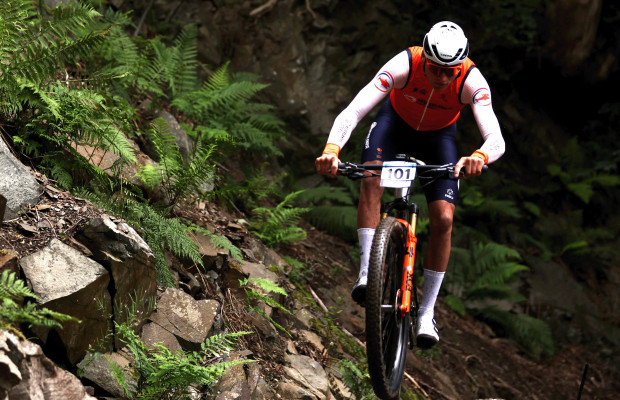
Some reasons to stay away from the road in winter
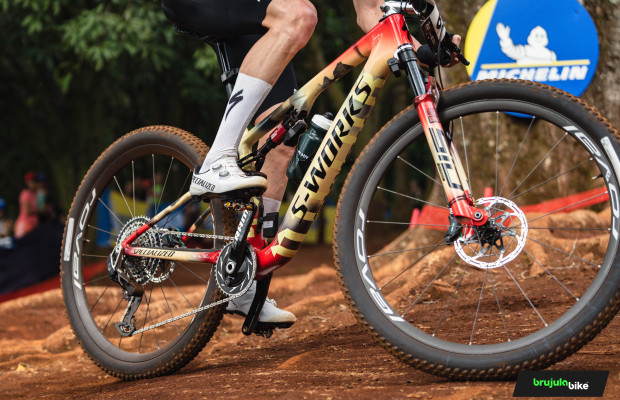
S-Works: what does it really mean and where does Specialized's most exclusive label come from?
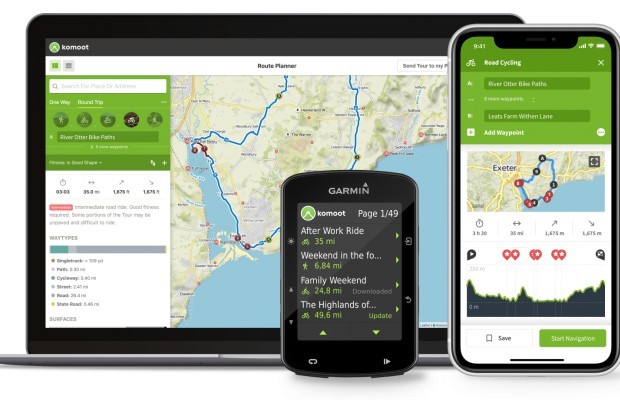
The best apps for cycling and mountain biking
In the case of the two pedals we are discussing, the most delicate part is the sensors, and these are inside the axle, well protected from possible impacts. In the case of Favero, all their electronics, including the battery, are inside the axle. The Garmin have replaceable batteries, which is the only delicate part outside the axle.
In case of damage or wear on the pedal body, in both cases the body can be purchased separately, as we will see later.

Another small disadvantage is that, normally, the height of a pedal with a power meter is higher. Pedal manufacturers study designs so that the shoe support is as close as possible to the axle, thus lowering the center of gravity by a few millimeters and gaining some free space to avoid frequent hits with stones and uneven terrain while pedaling.
In the case of Favero Assioma Pro MX the difference in pedal height compared to a standard pedal is the smallest in the market in its segment, with a Stack (height from the center of the axle to the shoe support) of 11.2mm. In the case of Garmin Rally XC, it is slightly higher at 13.5mm.
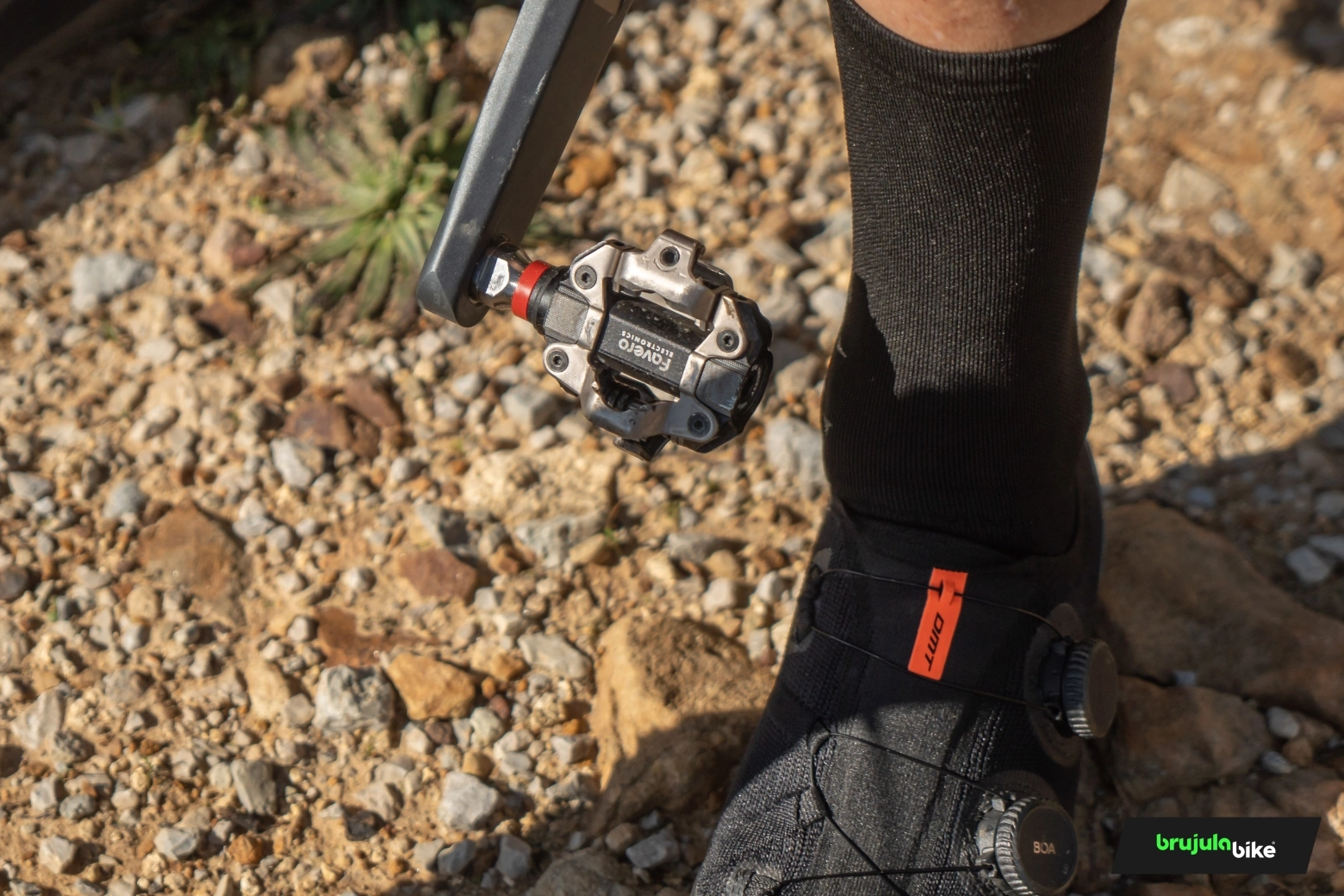
But having power meters in the pedals has interesting advantages. The biggest one is possibly the ability to use them on several bikes by simply switching them from one crankset to another, a task that can take a couple of minutes. This way, we can share a power meter on more than one MTB, or for example on an MTB and a Gravel bike.
Another advantage of this type of meter is that it provides measurements that are beyond the capabilities of other types of power meters, such as some pedaling dynamics data. Both Garmin and Favero provide details such as the time we have pedaled standing up, or the power phases with each leg, with detailed angles of where we exert our force, so we can see possible imbalances in our pedaling.
They also measure our foot placement on the pedal, showing us the millimeters we deviate from the center of the pedal, so here we can also see if we have any asymmetry.
Favero Assioma Pro MX vs Garmin Rally XC
Let's dive into the characteristics of each one and what sets them apart so that each user has arguments to decide.
First of all, it must be said that both options seem to us to be products of very high quality, with proven performance, and are unlikely to disappoint the consumer.
The first impression when taking both out of their respective boxes is that Favero is slightly more compact than Garmin. The attachment system is very similar between them and clearly resembles that of a Shimano pedal. We also notice that the surface where the shoe sole will rest is slightly larger on the Favero.
In general, there is a great quality in the construction and finishes of both pedals, highlighting the fine machining of the axles, where the sophisticated work is evident. In fact, as we have already mentioned, the heart of both systems is inside the axles, which is only visible on the inner face, where there is a black cover that lights up with a flashing LED when the pedal is active. In the Favero, we also see the pins for battery charging on the exposed part of the axle.
Regarding the slight differences in their dimensions, we have already mentioned that the Stack of the Favero Assioma MX-2 is slightly smaller, at 11.2mm compared to the 13.5mm of the Garmin Rally XC200.
The Q factor in both pedals is identical, at 53mm.
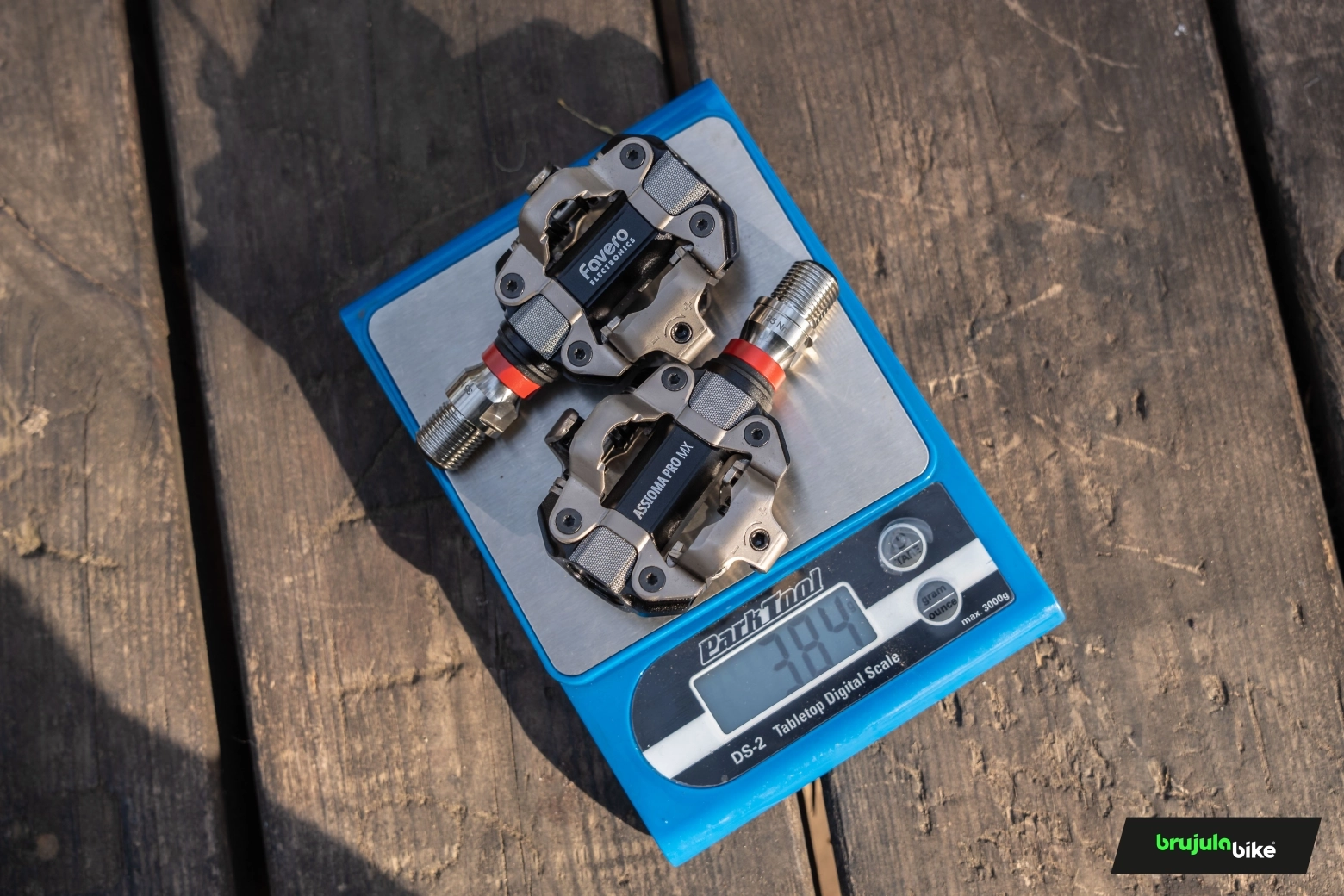
Now let's talk about the weight, where there is a clear winner, as Favero stands out with a weight of 384 grams compared to the 447 grams of Garmin on our scale. That's a 63-gram difference that users of this type of premium products will take into account.
And there is what may be the biggest difference between these pedals. It is the chosen path for power supply, as they both choose different paths.
Favero opts for an internal rechargeable battery. For this, the pedals come with the cable and adapters, which are easily attached as they are magnetic. They can be charged while mounted on the bike and, with a full charge, they announce a duration of 60 hours of use.
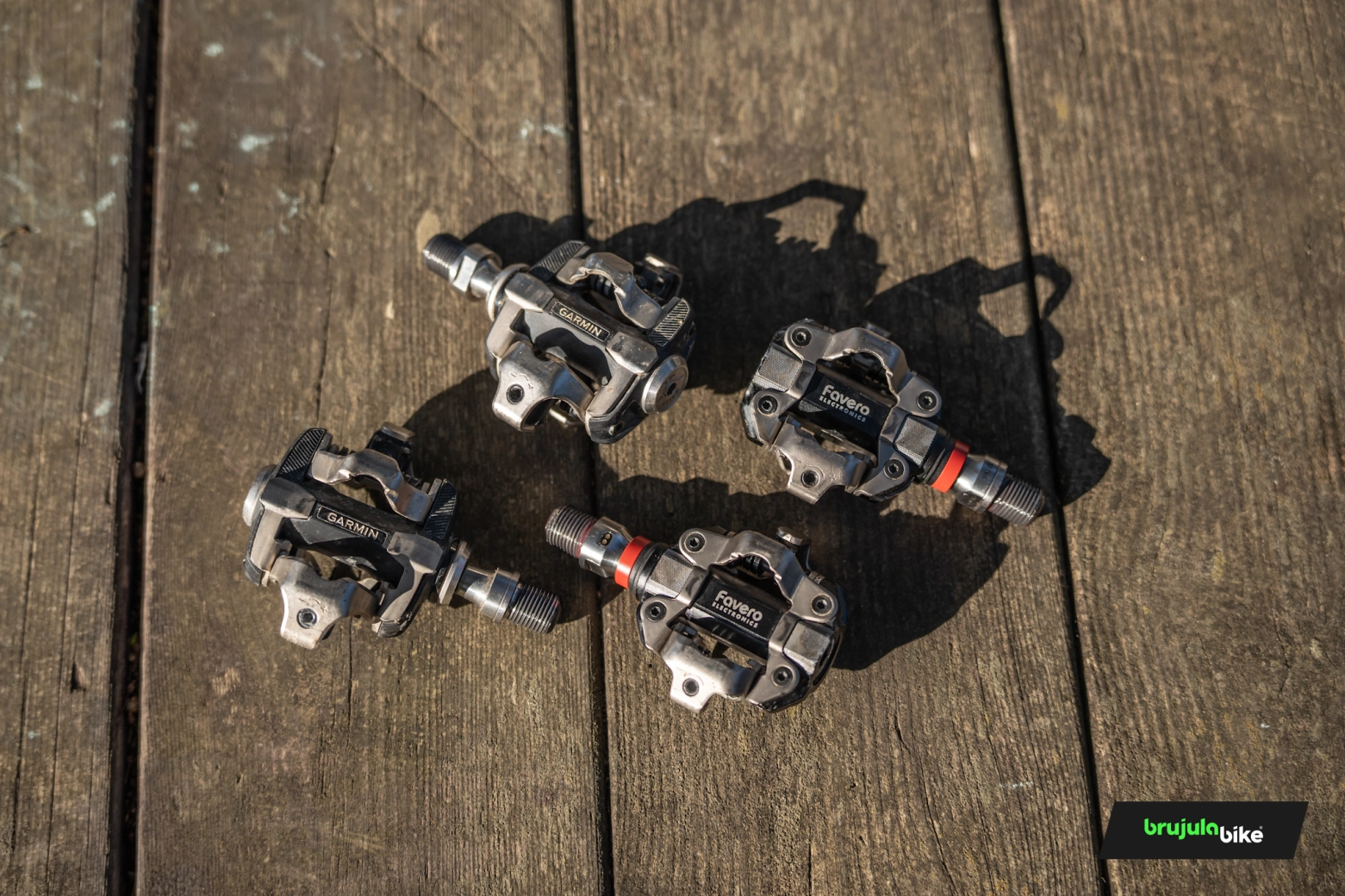
In the case of Garmin, they opt for a replaceable battery in each pedal that offers double the autonomy, with 120 hours. The battery change is very simple, and although it is true that with each battery change we open a sealing joint, the quality of construction makes us think that there will be no future sealing problems.
In our opinion, both options offer enough autonomy so that we don't have to worry too much about running out of battery. In the case of Favero, it gives us the possibility to do any stage race without having to carry the charging cables, and even more so with Garmin. So the negative points are that, with Garmin, we will have to buy batteries from time to time (their price is less than 5€ in reputable brands), and with Favero we will have to be careful not to lose the charging cables and accessories.
On the field
We have been using each of the pedals for a while. The measurements in both cases have seemed very reliable to us, without strange power spikes or unexpected disconnections.
Both Garmin and Favero collect all kinds of pedaling dynamics data, which we can view on the go, both on our cycle computer and in the application for later analysis.
We have conducted our tests using a Garmin GPS and have not encountered any restrictions due to the use of Favero, not even in the Garmin Connect application, where all the data appears just like with Garmin Rally. On the GPS screens, we can select all kinds of power-related values in both cases.
As for the mechanical operation. We have to say that both pedals offer a very crisp engagement and disengagement feel, very much like Shimano. And both have a certain angular freedom before disengagement, which will protect our knees, allowing for a natural alignment during pedaling. In both pedals, we can adjust the spring tension to our liking for firmness in disengagement.
The price of the pedals and their replacements is key
Here we find another of the major differences between Garmin Rally XC200 and Favero Assioma Pro MX-2, as there is a considerable price difference in favor of Favero, which are more affordable at a price of 742.87€, compared to 999.99€ for Garmin.
As we can see, they are not cheap components, and when it comes to elements exposed to possible impacts and wear from use, it is vital that replacements are available. And in both cases, they are available, although the price also varies greatly here. Favero offers each pedal body separately at a price of 59.29€. Garmin also offers the replacement of each pedal body for 199.99€, as we can see, a considerable difference.
In both brands, the axle and power sensor are common to their mountain and road pedals. Therefore, there is the possibility of purchasing a conversion kit, which are the road pedal bodies. And here Favero also wins. The Garmin kit costs 249.99€ while the Favero price is 98€. So by changing the bodies, we have a power meter for both modalities.
Favero seems like a better option to us
After using both pedals with power meters for a while, we are convinced of the quality of both products and we highly value the additional data that this type of sensor is capable of providing.

Regarding quality and performance, we do not see differences that could lean us towards one of them. But there are two other factors in which there is a clear difference, and Favero Assioma wins in both. It is the weight and the price, as a 63-gram difference is sufficiently relevant when talking about top-of-the-line bikes, where every gram saved is measured, and there is also a considerable price difference of over 250€.
Although there are also other intangible details, such as aesthetics or brand image, and we understand that there will be users of Garmin products who like to complete the ecosystem that the brand can offer.